Lithium batteries, especially lithium-ion batteries, have become a preferred energy source for many items due to their high power density and light weight as well as their rechargeable capability. Lithium batteries can be found in most consumer electronic items such as smart phones, laptops, and tablets as well as larger items such as portable power tools, portable vacuum cleaners and e-bikes. However, many people have no idea that lithium batteries are classified as dangerous goods. With the increasing demand for electronic devices, the number of lithium batteries being shipped increases as well.
The term “lithium battery” refers to a family of batteries with different chemistries. For the purposes of the dangerous goods regulations they are separated into two types of batteries: lithium metal and lithium-ion.
While both types of lithium batteries have similarities, their differences are noteworthy. Lithium metal batteries contain metallic lithium and are primarily non-rechargeable. They have lithium metal or lithium compounds as an anode. Included in this group are lithium alloy batteries.
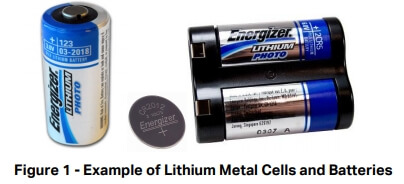
On the other hand, lithium-ion batteries are rechargeable, and lithium is only present in the electrolyte in the ionic form. Included in the lithium-ion category are lithium polymer batteries. Lithium batteries are sometimes abbreviated Li-ion batteries.

As lithium batteries are the preferred power source for most consumer and portable electronic devices, lithium batteries are found everywhere. They are in items you may not have even considered. Lithium metal batteries are found in items such as watches, calculators, cameras, car key fobs, and defibrillators. Lithium-ion batteries are generally found in products such as mobile telephones, laptop computers, tablets, power tools, and e-bikes. They are in everyday items carried by airline passengers and are transported as cargo every day.
Despite lithium battery shipping restrictions, lithium batteries can be shipped by air but not without stipulations. Lithium metal batteries shipped by themselves (meaning alone and not installed in a device or packed with the device they will power) are forbidden to be shipped as cargo on a passenger aircraft.
Lithium-ion batteries shipped by themselves must be shipped at a state of charge not exceeding 30% of their rated capacity. Lithium batteries are dangerous goods, and all of the regulatory requirements must be complied with, as set out in the Lithium Battery Shipping Regulations. In the United States, failure to comply with these regulations can result in a civil penalty of up to $27,000 per offence (LBSR 1.3).
When shipping lithium batteries by air, you must follow some basic rules. It is important to closely follow these regulations for the safety of all involved. You will find all of the required steps and guidelines in IATA's Lithium Battery Shipping Regulations manual.
The recommended checklist is intended to assist shippers verify shipments prior to tendering the consignment.
Please use this link to download the sample Shipper's Checklist for a Lithium Battery Shipment.
Lithium batteries may be shipped by air when all the applicable regulatory requirements are met. This includes making certain that:
Shipping counterfeit or substandard lithium batteries is not acceptable. To assist shippers of lithium batteries, including equipment with installed lithium batteries, a requirement came into force with effect January 1, 2019 that manufacturers and subsequent distributors of lithium cells and batteries must make available a test summary that provides evidence that the cell or battery type has met the requirements of the UN Manual of Tests and Criteria, Part III, subsection 38.3.
IATA Director General Willie Walsh says, “We all know how dangerous these batteries can be-they ignite-and clearly ensuring we can transport these devices safely on board is a primary focus for IATA.”
It is important that as a shipper, you take the necessary precautions and strictly follow the regulations when preparing your lithium battery shipments to ensure the safety of the aircraft and all on board. Lithium battery shipments should always be packaged to meet all safety regulations to avoid any possible damage or fines.
States and operators (airlines) may advise of more restrictive requirements to the IATA Dangerous Goods Regulations. These requirements are published in the DGR and the Lithium battery Shipping Regulations as State and operator variations. These variations may limit the carriage of lithium batteries. You should contact the airline prior to offering the lithium battery shipment for transport to make certain all requirements are being met prior to transport.
When shipping dangerous goods, they must be identified by the applicable UN or ID number, proper shipping name, class or division, and packing group (if applicable). The UN number is a 4-digit number assigned by the UN to substances and articles and is denoted by the prefix UN. The following (2) classification flowcharts are intended to provide guidance on the classification for lithium ion and lithium metal batteries.
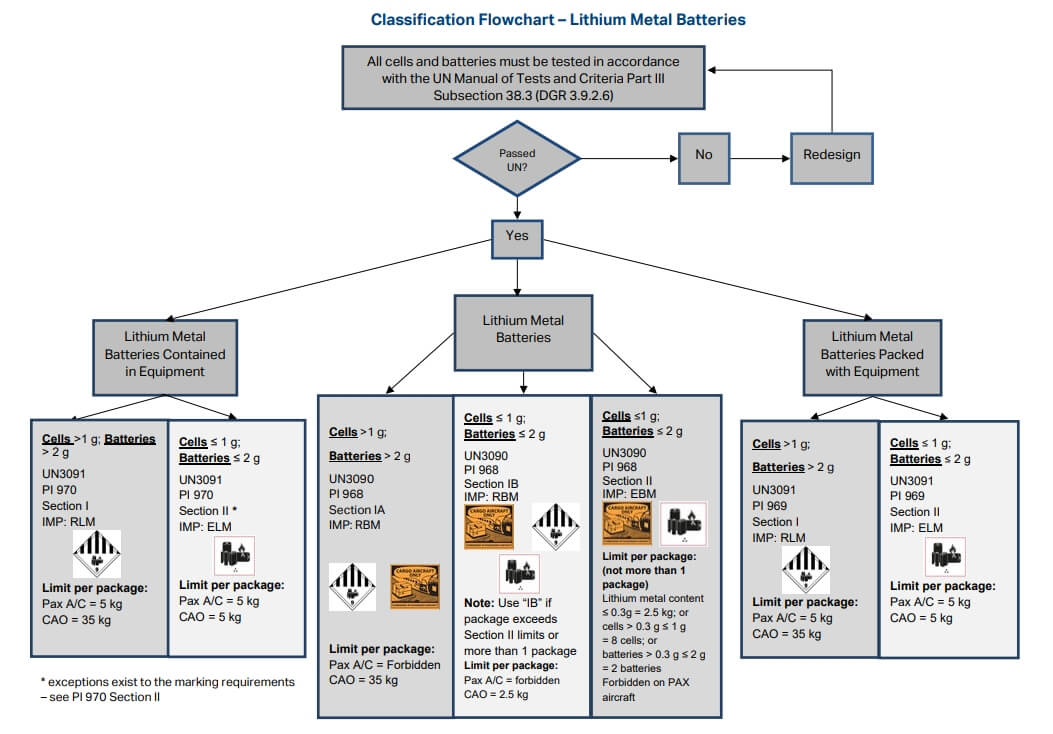
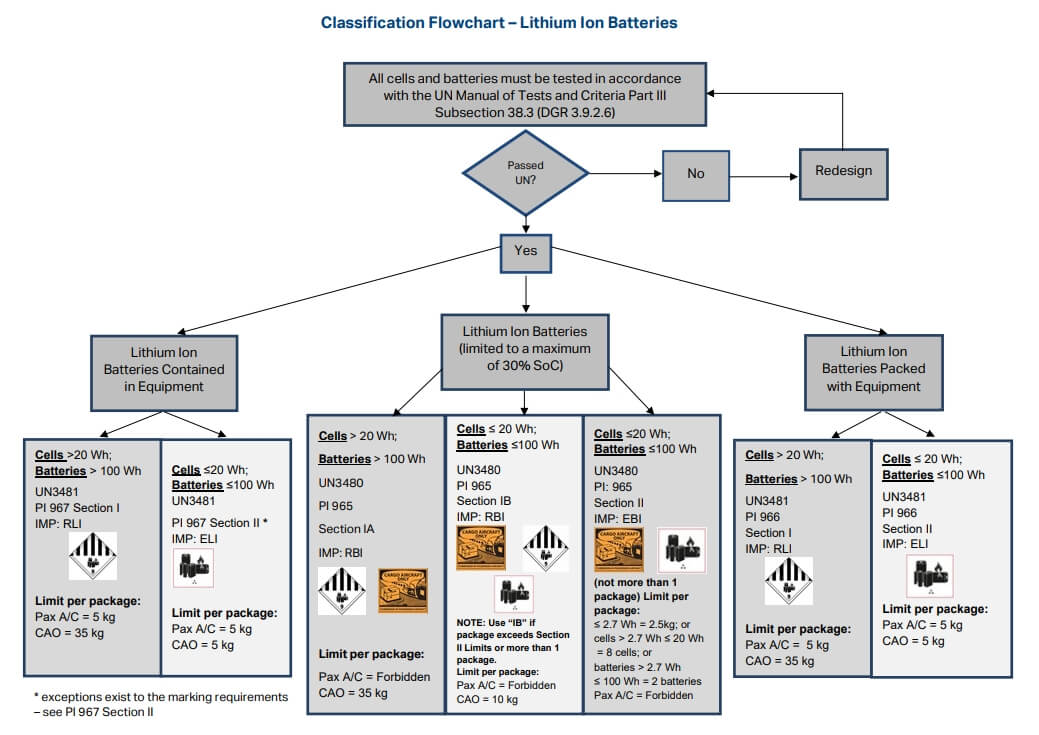
Depending on the Watt-hour rating for lithium ion cells or batteries or the lithium metal content for lithium mettal cells or batteries, the packaging required may need to be UN specification or may be simply strong, rigid packaging that is strong enough to withstand the shocks, mechanical handling, and loading encountered in transport. Shippers are also required to take into account other dangerous goods that may be shipped with lithium batteries to ensure that there is no incompatibility. Such as not packing lithium batteries with flammable liquids in the same package or overpack.
It is essential to follow the net quantity limits when shipping lithium batteries. A table in the Lithium Battery Shipping Regulations manual gives the precise weight of batteries per package on both cargo and passenger aircraft. All marks and labels must be clearly visible on the exterior of all packages and overpacks.
Shipping lithium batteries by air is possible, but it is crucial to note these are dangerous goods and the applicable regulations must be complied with to ensure the safety of all personnel, aircraft, and passengers.
Proper marking and labeling is required when shipping lithium batteries by air. Marking and labeling packages containing dangerous goods informs every person involved in its transport of what is inside the package and how to properly handle it during shipment, where to place it during transport, and how to address the situation if something goes wrong.
All marks must be
The lithium battery mark, as shown below, must be applied to packages as outlined in the Lithium Battery Shipping Regulations manual.
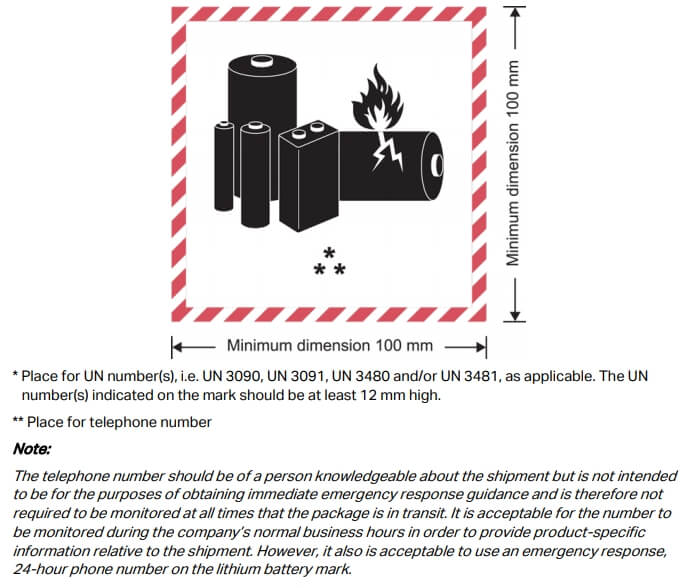
When shipping dangerous goods by air, the appropriate documentation must be provided by the shipper to describe the dangerous goods being offered. The Shipper’s Declaration for Dangerous Goods must be completed by the shipper for most dangerous goods offered for air transport. It is required that each field be filled out properly and legibly. The fields of the document are:
In addition to the Shipper’s Declaration is the air waybill. The air waybill is the contract of carriage between the shipper and the airline for the transport of the air cargo, which will accompany the shipment as it moves through the shipping process from shipper to consignee.
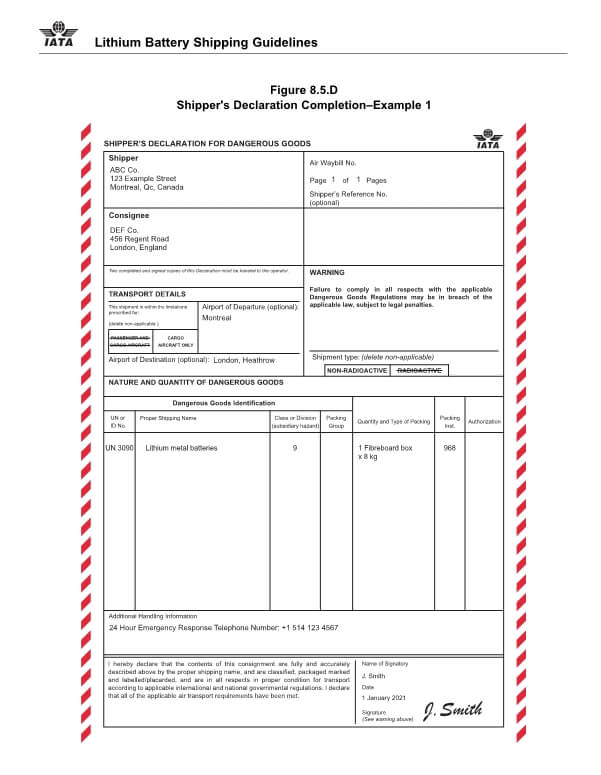
These are considered spare lithium batteries and must be in carry-on baggage. They are forbidden from checked baggage. Power banks installed in baggage must be removable. If it cannot be removed, then it is forbidden from being carried on the aircraft. “Smart luggage” may contain small lithium cells or batteries with no more than 0.3 g of lithium metal or a Watt-hour rating not exceeding 2.7 Watt-hour to power scales, locks, or tracking devices. All tracking devices must automatically shut down during flight.
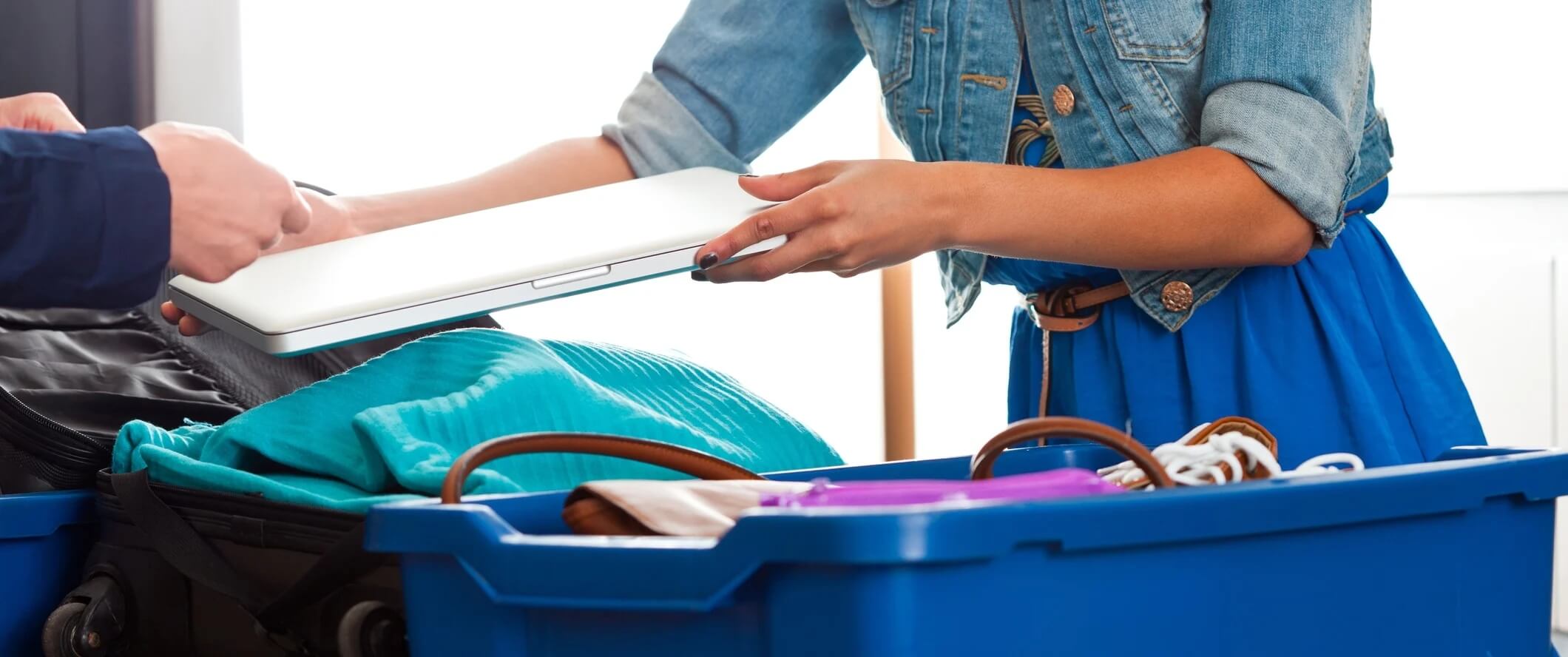
Some dangerous goods can only be transported on an aircraft if a competent person or organization properly pack them.These items are listed in the IATA Dangerous Goods Regulations (DGR) and must be prepared, labeled and declared in accordance with them.
However, some items listed in the regulations may be carried onboard the aircraft by passengers and crew if they fulfill the listed restrictions and limitations. Table 2.3.A of the DGR summarizes the information for items of dangerous goods that may be carried by passengers in checked and/or carry-on baggage.
This can include items such as lithium batteries in personal electronic devices, which can be carried by passengers. It is important to know what items can be carried on the person, like cellular phones or in carry-on luggage like e-cigarettes. Not all lithium batteries are created equal, and knowing the difference is important. If you have what might be considered dangerous goods, it is always best to check with the airlines to see what is allowable beforehand. You can also consult the IATA Dangerous Goods Passenger Corner for more information.
Spare lithium batteries, power banks, and e-cigarettes must be carried in hand luggage. These are forbidden in checked baggage.
IATA recommends that PEDs be carried in the cabin, however if PEDs are placed in checked luggage, measures must be taken to protect the device from damage and to prevent unintentional activation. The device must be turned off, not placed in sleep or hibernation mode.
Dangerous goods training for shippers and all other entities in the air cargo supply chain is required so that all persons that perform functions aimed at ensuring that dangerous goods are transported in accordance with these Regulations are competent to perform the functions for which they are responsible. The training supports the safety objectives of air transport. This dangerous goods training must be renewed every two years. For companies that only ship lithium batteries, or products packaged with or containing lithium batteries is it more appropriate to take the Shipping Lithium Batteries by Air course to get a comprehensive look at how to ship lithium batteries and how to properly meet the requirements set out in the IATA Dangerous Goods Regulations.
IATA provides the most comprehensive guide to international air transport regulations for shipping lithium batteries by air in their Lithium Battery Shipping Regulations manual. Navigating the rules surrounding how to ship lithium batteries can be complicated, but IATA’s manuals simplify the complex task in easy step-by-step processes. IATA.org is a valuable resource for other safety manuals and guidance documents.